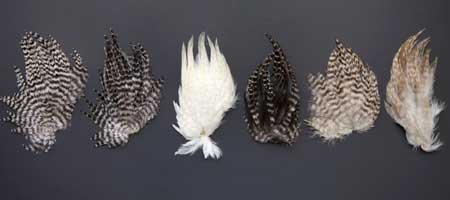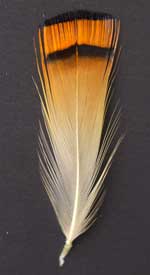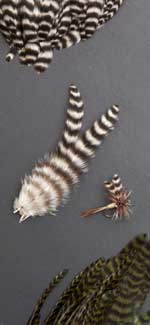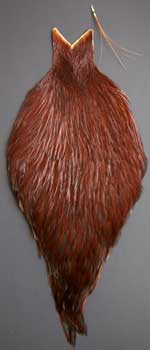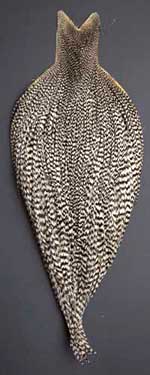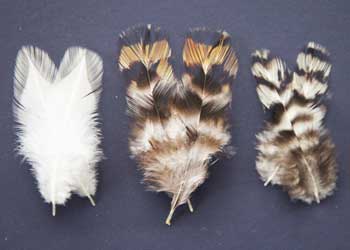
Tailing Packs - Spade Hackle
Spade hackle get it's name from it's unique shape. Just who gave it this name, I have no idea.
There has been much confusion as to just where these feathers come from on the bird. They are found on the shoulders and wings of roosters.
However, with the breeders selecting for ever smaller midge sized hackle, these feathers are becoming harder and harder to find.
feathers from: hen cape, rooster cape, winger cape. and winger patch
Tips for Tying with Spade hackle
 If you want your dry fly to float on the water's surface, the tail fibers you use have to be stiff. If they bend, your fly will break the furface tension of the water and sink. This is a mistake many tiers make and resort to some type of artificail floatant.
If you want your dry fly to float on the water's surface, the tail fibers you use have to be stiff. If they bend, your fly will break the furface tension of the water and sink. This is a mistake many tiers make and resort to some type of artificail floatant.
The beauty in spade hackle is that the fibers are long and stiff - making perfect for tailing on your dry flies. Another source of these "hard" fibers is found on the throat of the rooster. You'll find these feathers on the outer edge of a dry fly cape. They protect the body of the rooster from the sharp spurs of other roosters.
| Coq de Leon | ||||||
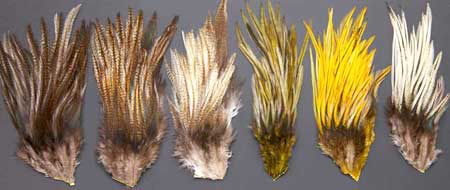 |
||||||
Dating back to 1624, Coq de Leon, or the "rooster of Leon" is the oldest line of birds bred for their feathers. The beautiful long speckled fibers are stiff, almost having a glassy look. The perfect tailing material. To see the full selection of CDL tailings offered by Whiting, please visit; Coq de Leon |
||||||

| ||||||
| Browns | ||||||
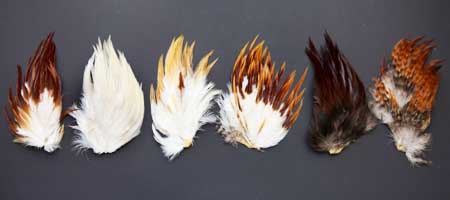 |
||||||
For Cahill patterns, the cream is perfect. These different shades of browns are as nice as they come.
|
||||||

|
||||||
| Duns | ||||||
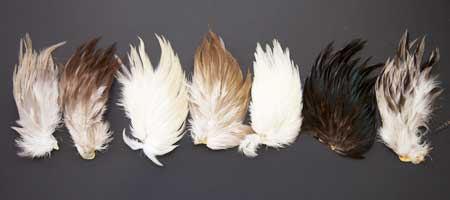 |
||||||
Black is also a popular color if you're tying midge patterns. Surprisingly, the black tails stand out on the water making your fly easier to see.
|
||||||

|
||||||
Tailing Feathers
Coq de Leon Tailing Packs
Golden Pheasant Tippets
Lemon Wood Duck
Mayfly Winger Feathers
Winger Patches
webby feathers with nice round tips
Body Hackle
Rhode Island Red Quill Body Capes
Dry Fly Hackle
From Whiting to Ewing, click the picture to
compare hackle from all the major growers.
